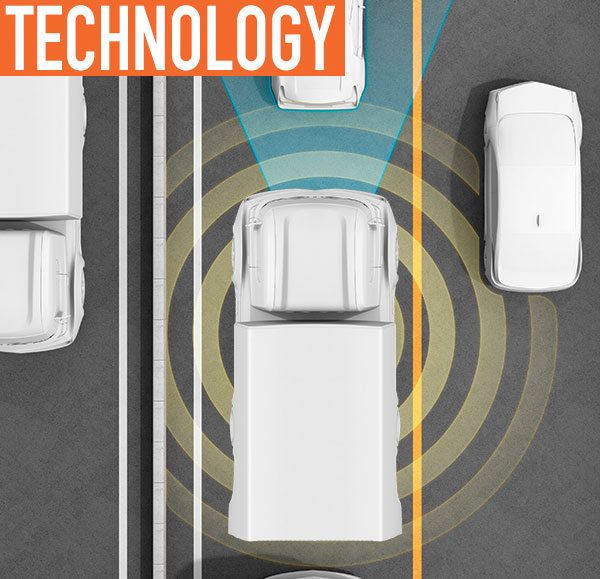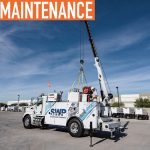The work truck business will inevitably evolve as new devices and systems exert their impact on it. It’s equally certain that the pace of this change will accelerate—technological progress works that way—and we’ll be witnessing some major shifts not only in the way that truck fleets operate, but as to which companies will survive.
For that reason, it makes sense to consider these developments carefully. Among the innovations and transformations of which we can expect to see more are in-cab monitoring cameras.
VIDEO MONITORING
Video cameras are now a common component in motor vehicles. All new vehicles sold in the US in 2016 and later are required to have backup camera systems, and many are equipped with side-view, lane-monitoring video feeds as well.
These systems are configured to give the driver a look at his or her surroundings. The next cameras to be installed will be inside the cab of the fleet trucks, facing outwards in front of the vehicle and, in some cases, even aimed at the driver.
While this may sound like a Big Brother challenge, there are legitimate reasons for seeing what is in front of the vehicle and what the driver is doing, and not necessarily for disciplinary purposes. In accident investigation and reconstruction, a digital view will help determine if what went wrong was related to driver error or a positive action taken by the driver to avoid an accident or being cut off. This record of the event can clear the driver from alleged culpability.
This visual input augments the information provided by telematics. If the vehicle data shows that a driver suddenly accelerated or braked hard, video from inside in the cab might reveal the reason for doing so. Forward facing and in-cab monitoring cameras can also prove to be a valuable tool in driver assessment and training.
ADVANCED DRIVER ASSIST
Soon, all these cameras will be doing more than providing passive visual input. There are systems that combine cameras with warning devices, either an audible buzzer or a mechanism that causes the steering wheel or seat to vibrate if a driver strays outside his lane. In addition to warnings related to the vehicle’s position on the road, more sophisticated versions of this technology monitor the driver’s eye blink rate or head nods and alert him or her when these signs reveal sleepiness.
At present, these systems are too costly for widespread adoption, but as usual regarding new technology, we will see them come down in price.
MACHINE LEARNING
One more use for a camera array is to provide inputs to the vehicle itself. It’s conceivable that in the near future, fleet trucks will begin taking cues from the road—reading speed-limit signs, for example—and either signal the driver to take corrective action or do so without driver intervention. In fact, some GPS fleet management systems already offer driver behavior monitoring with in-vehicle hardware devices that alert drivers by visual and audible warnings when unsafe driving incidents are about to occur.
Proximity sensors with automatic braking to avoid rear-end collisions are destined to increase in popularity. A steering override that swerves the vehicle away from an obstacle may be the next level in automated accident prevention.
COMPREHENSIVE DIAGNOSTICS
Existing vehicle monitoring and GPS fleet tracking functions keep tabs on gasoline or diesel engines. Onboard sensors measure engine idle time, fuel consumption, and coolant temperature—operating conditions that will be largely irrelevant if electric motors replace combustion technology.
When manufacturers manage to overcome the range and charging-time limitations and electric-powered trucks are a reality, the monitoring data will be different. For these motors, outside ambient temperature and additional electric load (lights and cabin heating or air conditioning) are important in estimating range. Maintenance schedules based on performance will not be the same as before.
OEMS AS DISRUPTORS
At one time, a commercial vehicle equipped with a global positioning unit, telematics, and wireless data transmission was quite unusual. Today, we’re used to seeing these and they’re increasingly standard features on fleet trucks, installed by the OEMs.
This poses new challenges. Some vehicle fleets consist of vehicles from a variety of manufacturers, and often this means a number of different hardware and software systems. That’s a potential headache for the fleet manager, who has to reconcile data streams from different—and sometimes incompatible—sources into one database for analysis. Until every manufacturer agrees to adhere to a single telematics standard—not happening soon, if ever—an aftermarket system to sort this out is a necessity. The practical solution is a platform that consolidates all the information from a fleet’s individual assets through a single portal.
Some of these new technologies are destined to arrive sooner than others, and not all of them are likely to exercise an equal influence on the fleet sector. But, it’s a good bet we’ll be noticing their effects before too long.
FOR MORE INFORMATION:
Nathan Todd is the director of product management at Teletrac Navman, where he is responsible for the product strategy and lifecycle of its flagship GPS telematics solution, DIRECTOR. Since joining the company in 2008, he has been instrumental in translating customer needs into the product roadmap, driving customer adoption and advocacy, as well as identifying emerging markets to grow revenue. Find out more about Teletrac Navman, visit www.teletracnavman.com
_______________________________________________________________________
MODERN WORKTRUCK SOLUTIONS: JANUARY 2017 ISSUE
Did you enjoy this article?
Subscribe to the FREE Digital Edition of Modern WorkTruck Solutions magazine.
![]()




